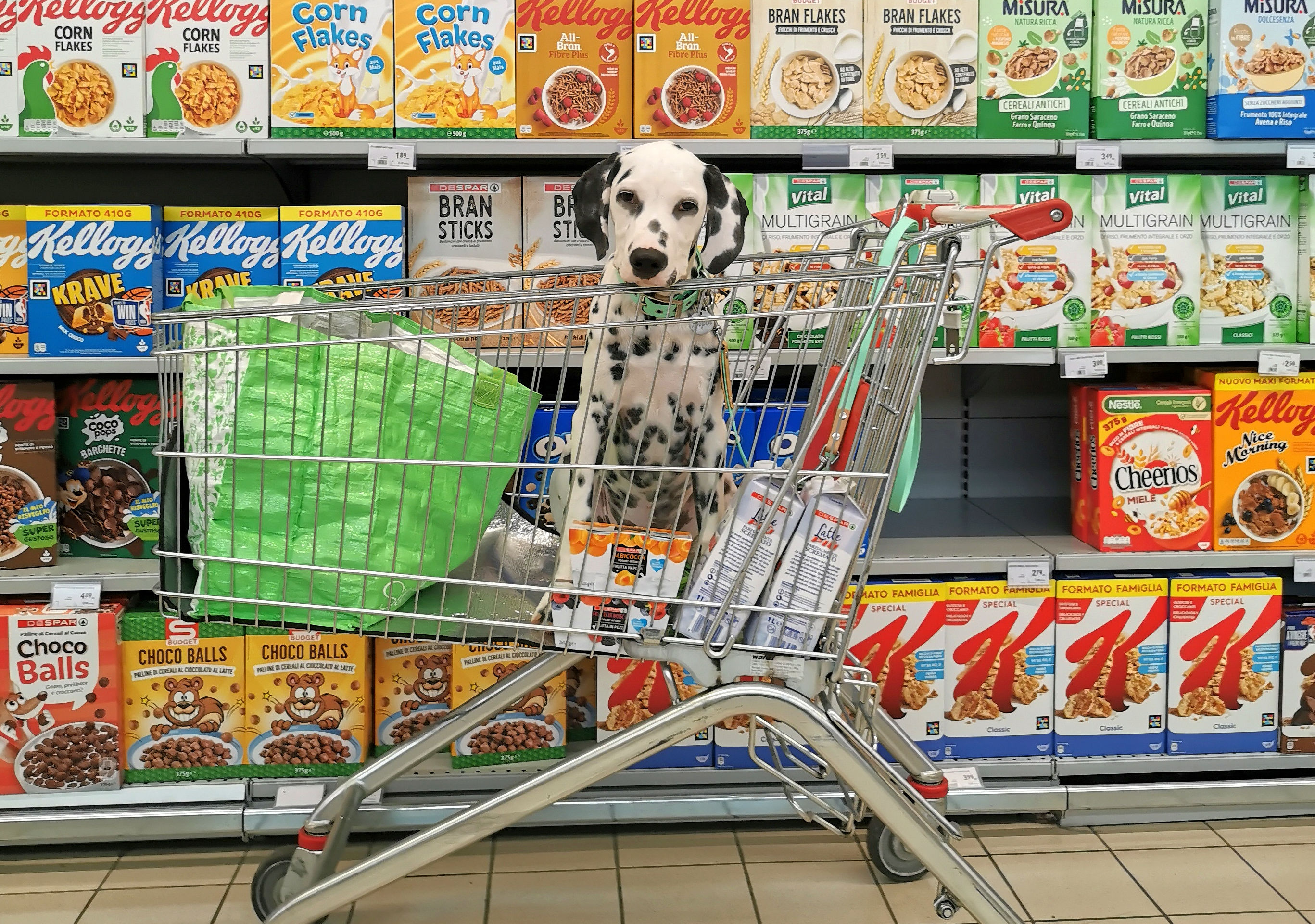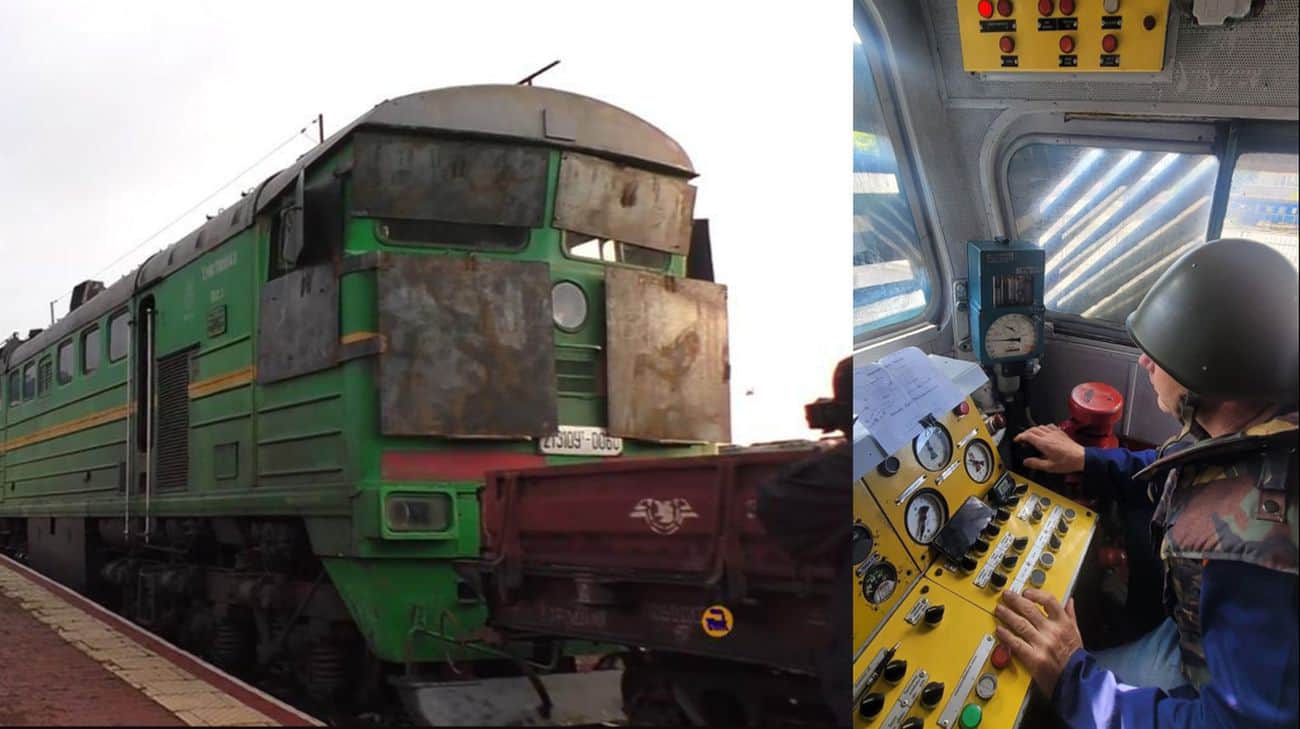Enrico Mentana and dogs in the cart. Because taking them to the supermarket is not a wrong thing, indeed

Many structures now allow access to animals and also make ad hoc trolleys available for the four -legged. Participating in the expense is a way to be together and to socialize with the urban environment
A recent image posted on social media from Enrico Mentanaa photo that portrays His three cavaliers at the supermarketincetted reactions, and not all positive. Yet, thedog access to storeseven food, is often allowed. Where it is possible to do it, shopping together with ours or our dogs can also be a valid training. We explain to you why.
Mentana’s posts and reactions
« Be careful, please: Bice, Blu and Nina have been lost and now await » dad « Enrico at the supermarket information office, thanks». He hadn’t even gone like this: why not, nobody had forgotten about these adorable three, indeed. They were all under a watchful look, in the shopping cart. In short, to make a non-motive: the journalist Enrico Mentana-simply-at the supermarket together with his three cavaliers King Charles Spaniel. Yet, in complaining about the post entitled by the director of Tgla7 « meeting of the shopping commission » (https://www.instagram.com/p/dhwhupzij92/), many have been (but in greater number those who showed appreciation), more than anything else for the arrangement of the three dogs inside the cart. The first post was then promptly followed, in response to the controversies, a next, in which Mentana highlighted the writing on the cart, previously not visible: « Welcome to our animal friends ». That the criticisms were only moved against the apparent non -specific trolley or, more generally, towards the habit of bringing dogs to the supermarket, we want to explain why, in the absence of precise prohibitions and in compliance with everyone, it can be a good exercise To be submitted – every now and then – to our friends.
Super dogs, possible access?
Mentana writes in the second post (https://www.instagram.com/p/digl-zeieug/), the one in which a new perspective of the image allows readers to distinguish the cartel on the cart, which identifies those in particular dedicated to the housing of small dogs: «This post is the answer to the many who – in good faith, or by ailment, or to make the bastian against – have objected to the photo of a few days ago. Read what is written on the cart. And learn« . A warning to learn that, Very often, entry to dogs is allowed not only in the corridors of shopping centers and within public businesses, but also inside shops that sell food products. It is enough to check that there are no particular prohibitions and, in the absence of these, follow the instructions, which generally change according to the size of the animal. Summarizing, There are supermarkets that choose to ban access in any dog in any dogexcluding only those of the police and those who guide hypo or blind people. Then there are realities that, on the contrary, allow you to enter everyone, without distinctions. Finally, there are shops that allow you to entry only to subjects of such size as to be able to stay in ad hoc trolleyswith a full seabed to avoid lesions to the legs. Therefore, to dogs too large for transporting the trolley, or access is denied or this is allowed only on condition that particular paths are followed, usually marked on the ground by special stickers, useful to maintain the animal at a distance compared to the non -packaged products, therefore tendentially present in the delicatessen, gastronomy and fishmonger departments.
What does the law say
The point is that there is one European law (Reg. EC n. 852/2004) which prohibits the entrance of the dogs in the premises in which foods are prepared, treated and preserved, which is the reason why even many « pet friendly » accommodation facilities that perhaps, in addition to accepting the dogs in the room also welcome them to the restaurant for lunch and dinner, do not do the same in the breakfast room, where the buffet format is more usual. In Italy, in this regard, however, the Ministry of Health clarified through note no. 23712 of 07/06/2017 that access can be allowed if it is possible to avoid the risk of food contamination.
The precautions to be adopted
With the necessary precautions – in addition to the specific trolleys and obligatory routes, also high or closed shelves – more and more supermarket chains authorize access with their animal, provided that, in compliance with the Presidential Decree 320/54, veterinary police regulation, as required for any other public and a half of transport venue, are on a leash. In short, if access to dogs is allowed, it means that, peace to the soul of the most attentive to hygiene, the operator of the food sector believes he has adopted all the appropriate measures for Avoid food contamination by the animals present in the premises. Fortunately, more and more supermarket chains have organized themselves for this purpose, facilitating the Pet Lover clientele not a little that, otherwise, it would be obliged to leave the dog in the car – option not advisable and in any case practicable only when the temperatures allow it – or linked outside, to the mercy of possible malinent possible.
Because we are almost always together
But why not leave the dog at home, will many think? We live in frenetic times that want us more often outside, between working commitments and various movements. To pay the expenses, as well as our psychophysical well -being, also that of our affections, including pets, which in many cases they suffer our absence manifesting a real separation anxiety. Regardless of the fact that our responsibility is to alleviate, through the advice of veterinarians behaviorists and dog instructors, this discomfort, teaching the dog also to live serenely the daily detachment from us, this does not mean that it should not be tried to try to try to Maximize time that can be spent together. The dog would certainly prefer activities capable of satisfying its particular ethological needs but, in the absence of the most suitable environments, Any opportunity to be together with the owner will make him satisfied.
Here then we will tend to want to bring the dog almost always and everywhere with us, except particular cases in which the subject prefers to stay at home, even alone, rather than facing certain contexts. A Maremma shepherd He will prefer to expect in the garden, by committing his time, also thanks to his marked autonomy, to do it placidly, but with an always vigilant eye on the property. A Belgian shepherdon the other hand, in order not to lose sight of its human reference, it will even accept « torture » of the shopping center. To evaluate how to proceed, we will have to know our friend deeply, its particular needs and skills, and behave accordingly, supporting both the dog that is better to leave at home, as it is what is preferable and possible to bring as often with us.
You pay two take three
In short, to those who ask themselves whether to bring dogs, even puppies, at the supermarket is not yet another found to exhibit them in public, it can be replied that the phenomenon would also have a profound meaning for the purposes of Management and education of our friends. There so -called environmental socializationthat is, towards surfaces, noises and contexts that the dog should know and metabolize as a young man, when he is more receptive and positive towards the news, It is essential for the future balance of the adult dogespecially if of a subject who lives in highly urbanized areas. Let’s imagine how many useful inputs There can be in a supermarket, to be proposed to the dog that has never entered it gradually, initially choosing less crowded times and on the occasion of short expenses. So yes, it is a Functional training for everyday life.
But nobody forces us
Refined the competence of the session at the supermarket, then Nobody forces us to always bring the dog with usbut the fact that this has gradually acquired confidence with that environment will ensure that, on the occasions when we could find us forced to bring it with us – like summer, when we cannot leave it in the car -, it does not suffer any trauma, which could instead suffer if, all of a sudden, as an adult it was catapulted into a similar context. A photo to post on social media can then escape, indeed welcome, because it is desirable that more and more people see how much an educated dog is integrated in any environmentin ours and his interest: so we can spend more time together, even if only for commissions. But also in the interest of the company, to which we can demonstrate that we do not represent any threats for others.







